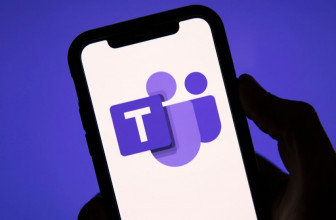
We all know that generally speaking tablets are on the wane, but according to the latest figures, 2015 was the first time ever that numbers of slate shipments witnessed a decline in double digits.
According to stats crunched by TrendForce, 168.5 million units were shipped last year, which is a 12.2% drop compared to 2014’s tablet shipments.
Thus TrendForce concludes that a gradual contraction is becoming a more pronounced trend, although some companies are bucking that trend – and Microsoft is one of them.
Redmond isn’t a top tablet vendor yet, of course, so let’s look at the major players first. Naturally enough, top of the tree is Apple, but the iPad only managed to shift 49.6 million units in 2015 compared to 63.4 million the previous year – a decline of 22% year on year.
Apple’s market share shrank from 33% in 2014 to 29.4% in 2015, and this year is predicted to decrease further to a mere 25%. The iPad Pro didn’t make that much of an impact in 2015 because of its premium nature and price.
Samsung was in second place, but fell almost as heavily with an 18% year on year decline to 33.5 million units in 2015. The company now has a tablet market share of 19.9%.
Amazon outpaces Asus
The other slate players are a long way behind these two giants, with Lenovo in third place with a market share of 5.8%, followed by Amazon on 3.3% and then Asus on 3.2%. Amazon actually overtook Asus in 2015, doing particularly well in Q4 with the new 7-inch Fire tablet.
As for Microsoft, TrendForce noted that the company definitely deserves highlighting despite not being in the top five tablet vendors. Redmond apparently delivered “stellar shipment results” last year driven by strong sales of the Surface Pro 4 and older Surface offerings.
In total, Microsoft’s tablet shipments increased nearly 50% last year, which is a remarkable swing against the general trend. Redmond is also helping to push the popularity of 2-in-1 convertibles (a separate category from tablets) forward, a market which is expected to gather great pace in the near future.










































Here's my .02 – we work with businesses that need this sort of device, and the migration has clearly been from laptop… to tablet… to Phablet – the 5"-ish phones like the iPhone 6S plus or the Galaxy 5. They're big enough to read real documents or do real work on – but will still slide into your shirt pocket. In our experience that's the cut-off… if it's too big to pocket, it's too big to cart around and people won't use them.
Agreed. The iPad Pro comparisons to the Surface were ridiculous. As someone who uses a Surface Pro 3 with a docking station and two monitors, and a regular keyboard and mouse, I laugh at the idea of how an iPad even compares. With an i7 and 8gb of RAM, I can run office, tons of tabs in chrome, spotify on the surface screen, while doing everything else on my larger screens. I can do pretty much anything EFFICIENTLY in the workplace, and when I take it home, I usually use it as a tablet, and it's cool for simple games and other uses you'd expect from a tablet, it just does that all in it's sleep. Before this, I never cared about tablets, but the Surface is really a pretty powerful PC, just in the tablet form factor.
So the device everyone has been predicting was going to kill the PC has been declining also?
I guess you'll be telling us a 2 in one is going to kill the PC and tablet
I think that as there is more and more overlap between the functionality of devices that the overall saturation is hitting a critical point.
The problem with tablets is that they are not doing anything NEW. Android on a tablet is just a big phone experience and the tablet that I bought last year and the year before is still perfectly capable of doing everything that I need it to do. Add to this that larger phones act as small tablets. There is nothing new that the tablet does that makes it compelling. At least the surface runs desktop software also. That's "different". Different enough that people are curious. Ipad and Android tablets have been stuck in a quagmire of diminishing returns for many years now. I wouldn't call it "Bleak" though. They just need a software experience that is new and tablet centric. Either Google or Apple could do this in a heartbeat if they wanted to.
I really wish you'd stop referring to "Tablets" as "Slates". That was an ill-fitting term for the first gen full-bore Windows PC tablets circa 2005-ish. Nobody has called any kind of tablet a "slate" since then (to my knowledge).